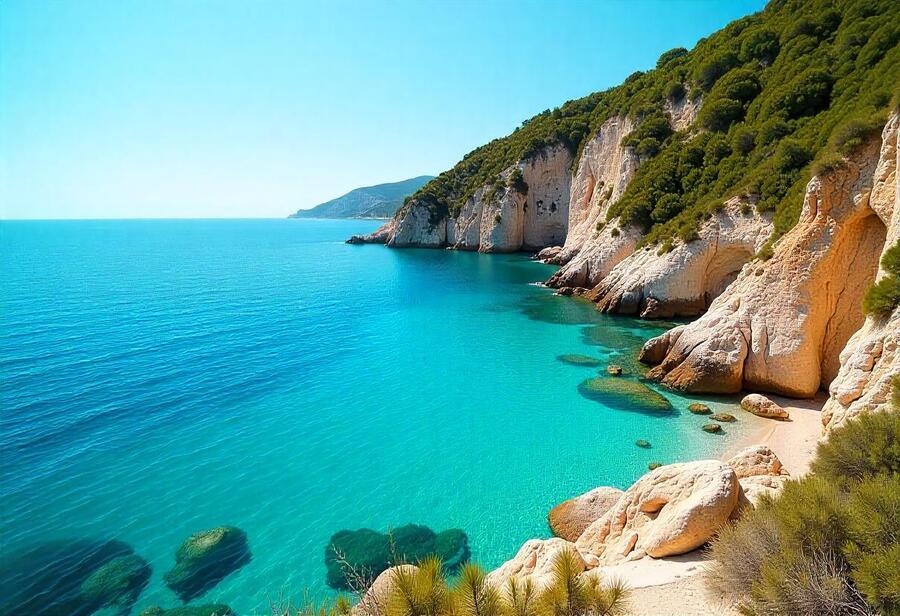Sunday, June 1, 2025

Croatia, Italy, Africa, Greece, and Cyprus are linked by a remarkable network of natural forces that work together to maintain the exceptional water quality of the Adriatic and Mediterranean Seas. This connection is shaped by the flow of major rivers, the movement of warm winds, and the circulation of ocean currents that transport nutrients, regulate temperature, and support marine ecosystems across these regions. Rivers like Italy’s Po and Croatia’s Neretva deliver vital freshwater and minerals, while winds and currents originating from Africa bring warmth and nutrients that stimulate the growth of microscopic marine life. This delicate balance of freshwater input, saltwater exchange, and biological activity creates some of the clearest and cleanest coastal waters in Europe, making these seas not only visually stunning but also ecologically vibrant and sustainable.
The secret to the Adriatic’s remarkable waters lies in a combination of geographic, hydrological, and environmental factors working harmoniously. Several significant rivers feed into the sea, including Italy’s Po River—the longest in the region—and Croatia’s Neretva River, the largest on the eastern Adriatic coast. These rivers transport fresh water, sediments, and vital nutrients into the sea. While sediment inflows often cloud coastal waters elsewhere, the Adriatic’s unique conditions allow for an extraordinary level of transparency to persist.
Croatia’s position within the vast Mediterranean basin significantly impacts the quality of the Adriatic Sea’s waters. Functioning as the northern arm of the Mediterranean, the Adriatic links indirectly to the Atlantic Ocean via the slender Strait of Gibraltar. This connection enables a steady flow and mixing of ocean waters, which in turn affects the Adriatic’s unique physical characteristics and chemical composition.
A defining feature of the Mediterranean Sea—and consequently the Adriatic—is its rich, deep blue hue, which is primarily influenced by its high salinity levels. The region experiences greater evaporation than freshwater replenishment, making its waters saltier than many other seas. This increased salinity alters the way sunlight penetrates and reflects off the water, giving it that strikingly vibrant blue color.
Atmospheric and oceanic processes also impact the Adriatic’s waters. Winds and currents that arise from northern Africa move northwards through the Mediterranean, carrying warm, nutrient-rich waters toward Croatia’s coast. These currents deliver essential elements that nourish phytoplankton—microscopic marine plants that require sunlight to thrive.
The exceptional clarity of Adriatic waters allows sunlight to reach great depths, fueling photosynthesis in phytoplankton populations. These organisms, in turn, release oxygen and absorb carbon dioxide, playing a vital role in maintaining the sea’s clarity and supporting marine life.
This delicate balance of nutrient flow, sunlight penetration, and biological activity fosters an environment where the Adriatic Sea remains incredibly clear and vibrant. The pristine waters sustain diverse ecosystems and support critical economic sectors such as tourism and fisheries, both integral to Croatia’s prosperity.
Moreover, Croatia’s Adriatic coast is recognized as one of the cleanest marine environments in Europe—a vital factor for visitors and conservationists alike. A 2024 evaluation by European environmental agencies, covering all EU coastal nations plus neighboring countries, ranked Croatia highest for the number of beaches with outstanding water quality suitable for swimming.
The findings showed that over 99% of Croatia’s monitored beaches met top-tier water purity standards, outperforming other renowned Mediterranean destinations like Greece and Cyprus. This success reflects the country’s strong commitment to environmental stewardship and sustainable coastal management.
The Adriatic’s crystal-clear, pristine waters not only create a visually stunning backdrop but also offer perfect conditions for swimming, sailing, diving, and exploring vibrant marine biodiversity, enriching the travel experience.
In conclusion, the Adriatic Sea’s captivating beauty along Croatia’s coast results from a unique interplay of natural factors: the influx of nutrient-enriched river waters, the influence of Mediterranean and Atlantic currents, the warm and nutrient-bearing winds from Africa, and the thriving microscopic marine life that sustains ecological balance. Together, these elements craft one of Europe’s clearest and most pristine coastal waters, solidifying Croatia’s reputation as an unmatched destination for unforgettable seaside adventures.



